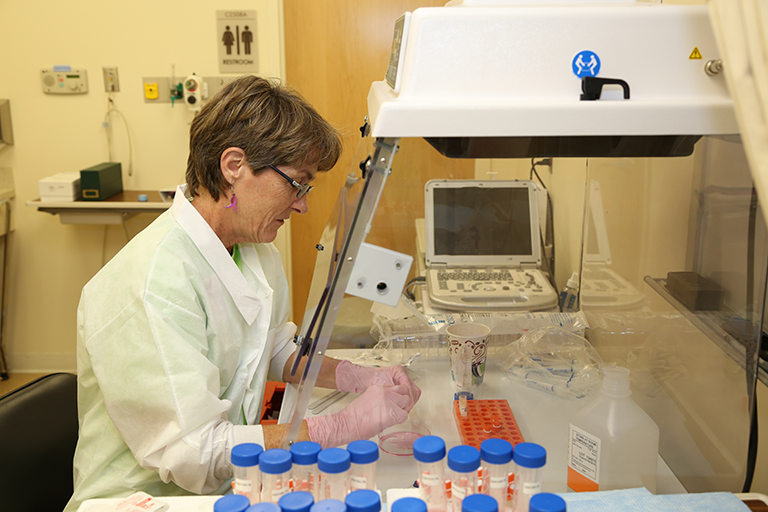As research resulting from using Komen Tissue Bank samples is completed and published, we will continue to update this reference page. If you are aware of research that should be included here, please contact the chief operating officer.
Note: Citations have been simplified to facilitate ease of finding the desired publication.
KTB tissue samples are vital to important breast cancer research

Virtual Tissue Bank: KTB data available for download
Be sure to check our free online database — you’ll find data generated by researchers using KTB samples, mammograms and medical history of the donors, images, and H&Es.

Researcher Spotlights: Luke McCaffrey, PhD
Rosalind and Morris Goodman Cancer Research Centre, McGill University
Dr. McCaffrey and his team focus on epithelial cells — specifically, growing them in the lab in a specialized three-dimensional environment that allows them to form complex structures that mimics the normal breast structure. They then introduce cancer-causing alterations to the cells and observe how normal cells become cancer cells.
As a researcher that has used the KTB samples I felt it important to donate and contribute to the great resource. My mother also was diagnosed with breast cancer so it's important to help fight for the cause to prevent breast cancer.
Anonymous — Tissue Donor
Fatal error: Uncaught TypeError: count(): Argument #1 ($value) must be of type Countable|array, null given in /var/www/html/ktb/research/publications.html:217 Stack trace: #0 {main} thrown in /var/www/html/ktb/research/publications.html on line 217

